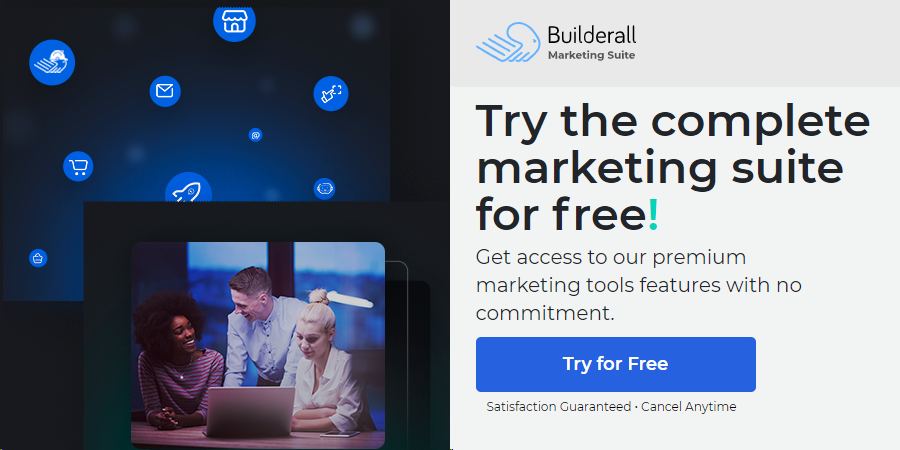Social Media Advertising
Social media advertising involves using paid media to promote your business on various social media channels, encompassing a variety of formats and placements. It allows for diverse creative options, including images, videos, and immersive experiences.
Paid social, also known as social media ads, involves targeting audiences, interests, and behaviors instead of keywords like in paid search. These ads are typically visually appealing and strongly associated with the platform, making them difficult to distinguish from regular content.
How does social media advertising differ from organic content
The price tag is the main distinguishing factor between paid and organic social media. Additionally, it is worth noting that a well-executed social ad can closely resemble an unpaid post to the point where the “Sponsored” label is the only indicator of its paid nature.
- Ads aren’t tied to the whims of social media algorithms. Paid targeting and bidding can be complicated. That said, there’s a guarantee that at least some people will see your ads. This includes people that don’t follow you. Contrast this with organic posts that could get buried by the algorithm.
- Ads contain specific calls-to-actions (“try our demo” or “shop now”). They likewise lead to specific landing pages attached to your ads.
- Organic social media is ongoing, ads are time-sensitive. Some brands cycle through ad campaigns on a consistent basis. Still, social media advertising is contingent on your business initiatives and budget. On the flip side, brands must keep up their organic presence whether or not they’re running ads.
- Cost-effective: PPC in general yields an average 200% ROI. In addition, paid social is a lower-cost alternative to targeting your competitors’ audience on search.
- Brand awareness: Not only are social media networks vast, but also, the visual ads allow you to customize them to your branding and style.
- Engagement: In addition to ad clicks, users can interact with social media ads by liking, sharing, and commenting.
- Targeting: Because users share detailed information about themselves on the platforms, social media ads allow for granular targeting.
- Not disruptive: For the most part, social media ads are often hard to distinguish from organic posts on the platforms, making them a less disruptive way to reach your audience.
How do social media ads work
Search ads primarily rely on keyword targeting, whereas social ads focus on audience targeting. Both types of ads have unique features, settings, and formats specific to each platform, but they also exhibit some common characteristics.
Social ads, similar to Google Ads, operate in an auction-style format for PPC. An algorithm determines both the placement and cost of the ads based on various criteria, such as ad quality, maximum bid, and past performance.
In the process of campaign creation, the first step for most platforms involves selecting an objective, typically consisting of three options to represent various stages of the funnel – top, middle, and bottom.
- Reach/awareness
- Leads/engagement
- Conversion/sales
- Targeting: You’re able to target users on each platform by demographics, interests, and behaviors as well as create retargeting and lookalike audiences. Every platform is different, but this guide to Facebook audience targeting can help you get an overall grasp.
- Account structure: While naming conventions vary for each platform, each one has an account structure that allows you to organize ads into groups and then organize groups into campaigns.
How to get started with social media advertising
Starting any marketing strategy is the most challenging part. However, by completing these fundamental steps, you will gain sufficient confidence to proceed.
1. Understand your audience
In order to effectively implement any marketing strategy, it is important to have a clear understanding of your target audience. This can be achieved by utilizing your current customer information, conducting market research, and analyzing data from existing platforms to gain insight into what approaches may yield positive results.
By thinking in a systematic manner, you can determine the appropriate audience, messaging, and timing for your advertising efforts. As you proceed with running your ads and gathering data, you will gain further, more precise understanding of the people who view and interact with your ads.
2. Choose one channel to start
Before you start intertwining them, you need to get the hang of the platforms, making a cross-channel marketing strategy important. Facebook is often a good first step, although the best channel will depend on your audience.
3. Establish some general goals
What is your goal for your social ads? You don’t need to set specific metrics yet because it’s difficult to do so without starting. However, you can generally determine which campaign objective to begin with by considering your primary goal (such as awareness, lead generation, conversions).
4. Look at benchmarks
The cost of your social ads will vary based on factors such as your industry, audience, optimization strategy, and more. However, it is useful to have a rough idea of expenses before you start, allowing you to establish some budgeting expectations.
5. Use your resources
We have a few roundups and even a tutorial available to assist you with social media advertising. There are numerous free resources available to provide you with support in this area.
- The 8 Best (Free!) Facebook Ads Courses for Every Level
- The 8 Best Social Media Marketing Courses (That Aren’t Boring!)
6. Just start
If you’re a small business wanting to gain some initial experience, the best approach is to simply begin and gain knowledge from that. It is also important to note that it takes time to learn social media advertising platforms. Hence, starting advertising as soon as possible allows you to gather the necessary data for the platform to effectively optimize your ads.
Tips for social media advertising
Let’s conclude by going through some brief suggestions for brands that are thinking about running ad campaigns on social media platforms.
Be ready to experiment with different campaigns
It is quite challenging to achieve success with your initial set of social ads. However, you can significantly improve your campaigns by conducting some experiments. Instead of diving right into ads, it is advisable to start with running small-scale tests.
When it comes to ad sets, there are numerous factors to consider, ranging from formats to copy. It is important to be ready to make adjustments until the most effective approach is discovered.
Use a social media marketing tool to make informed decisions
If you’re unsure of what ad to run, just look at your organic presence for inspiration.
Utilizing a social media management tool like Sprout Social can provide valuable insights from your analytics and past engagement, serving as a valuable resource for your ad campaigns. This includes identifying your top-performing content and messaging to repurpose as ads, as well as determining which networks would be ideal for your upcoming campaign.
By breaking down your data into smaller details, you can make more certain decisions regarding your ads. Having the ability to monitor both your organic and paid strategies simultaneously using Sprout is an advantageous extra feature. This approach provides you with a more comprehensive comprehension of your social media advertising endeavors.
Make your ads as personable as possible
Let’s reiterate: the more your advertisements resemble natural content, the better they perform.
The reason behind TikTok’s mantra, “Make TikToks, not ads,” is that authentic and unfiltered ads have shown to be successful on the platform. Similarly, brands can adopt this approach on Instagram as well. By using creator-based ads, your advertisements will instantly feel less focused on sales.
The top social media advertising channels compared
If you want assistance in choosing the most suitable channels for your strategy, continue reading for a detailed analysis of each channel.
Facebook advertising
Facebook’s advertising reach encompasses 2.11 billion individuals, equivalent to 26.7% of the overall population. The most prominent demographic on Facebook is the 25-34 age group, yet it possesses the greatest presence within the 65+ age bracket. The average expense per click on Facebook stands at $0.97, making it the second most economical compared to Twitter. Additionally, the average cost per thousand impressions (CPM) amounts to $7.19.
Facebook ad types
- Image
- Video
- Carousel
- Instant experience
- Collection
- Boosted posts
- Facebook Shops
Pros and cons
Fortunately, our Facebook ads tutorial guides you through the perplexing process of setting up an ad account, while creating an ad on Facebook is relatively simple.
As the effectiveness of a paid media channel increases, so does its competitiveness, and Facebook is not an exception to this. However, Facebook remains the most widely used social media platform globally and has the most evenly distributed user age groups among all similar platforms.
Despite the limitations posed by iOS updates and privacy changes, Facebook ad targeting remains unrivaled. Furthermore, Facebook is actively developing strategies, like the Conversions API, to uphold the integrity of reporting and targeting.
Instagram advertising
The population size of Instagram advertising audience is 1.48 billion, accounting for 18.70% of the total population. The most significant age group on Instagram is between 18-34 years. On average, the cost per click for Instagram ads is $3.56, while the average CPM stands at $7.91.
There are various types of Instagram ads available.
- Photo
- Video
- Carousel
- Collection
- Reels
- Stories
- Explore
- Pros and cons
Pros and cons
Despite being more costly than Facebook ads, Instagram ads have higher engagement, making it the preferred social media platform for consumers to follow brands and indicating increased intent. Moreover, it serves as an ideal advertising medium for ecommerce businesses.
YouTube advertising
The advertising audience on YouTube is the biggest among all social media platforms, consisting of 2.56 billion individuals, which accounts for 32.4% of the population. The age group with the highest representation is 25-34. On average, the cost per click for YouTube ads is $3.21, while the average CPM stands at $9.68.
Types
There exist six primary ad formats on YouTube.
- Skippable in-stream ads
- Non-skippable in-stream ads
- Bumper ads
- Outstream ads
- Masthead ads
- Overlay ads
Pros and cons
Video ads are typically engaging and effective, but it can be challenging to reach users on other social media platforms where they mindlessly scroll and watch videos without sound. However, on YouTube, where video content is expected, you have an advantage. Nonetheless, video ads can still be disruptive, and creating them requires a lot of resources.
Users spend the most time on this platform (tied with TikTok) at a whopping 45 minutes a day, so at the end of the day (or rather all day), you have high chances of reaching your target audience.
Pinterest’s ad audience size accounts for 2.90% of the population, which is equivalent to 225.7 million. The ad types offered on Pinterest include those with an average CPC of $1.50 and an average CPM of $3.50.
- Idea Pins
- Try on product Pins
- Collection
- Carousel
- Promoted Pins
- Shopping ads
Pros and cons
Most advertisers find they have limited control over ad placements on Pinterest and need to refresh their creative frequently to avoid ad fatigue. However, despite the limited Pinterest audience, it is still worth trying these ads for specific niches and businesses that have high-quality imagery, particularly showcasing their work.
TikTok
The TikTok advertising audience size comprises 88 million individuals, accounting for approximately 11.20% of the overall population. Amongst them, the largest age bracket falls within 18-24 years old. The average cost per click (CPC) stands at $1.00, while the average cost per thousand impressions (CPM) amounts to $6.06. TikTok offers four different forms for advertising purposes.
- Image
- Video
- Spark
- Collection
Pros and cons
In the YouTube section, it was mentioned that producing video content can be challenging and video-only platforms have higher standards. When it comes to TikTok ads, a minimum of $50 per day per campaign or $20 per day per ad group is required. However, considering the platform’s popularity and the daily 45 minutes that users spend on it, this is an excellent choice for businesses with a TikTok-focused audience.






